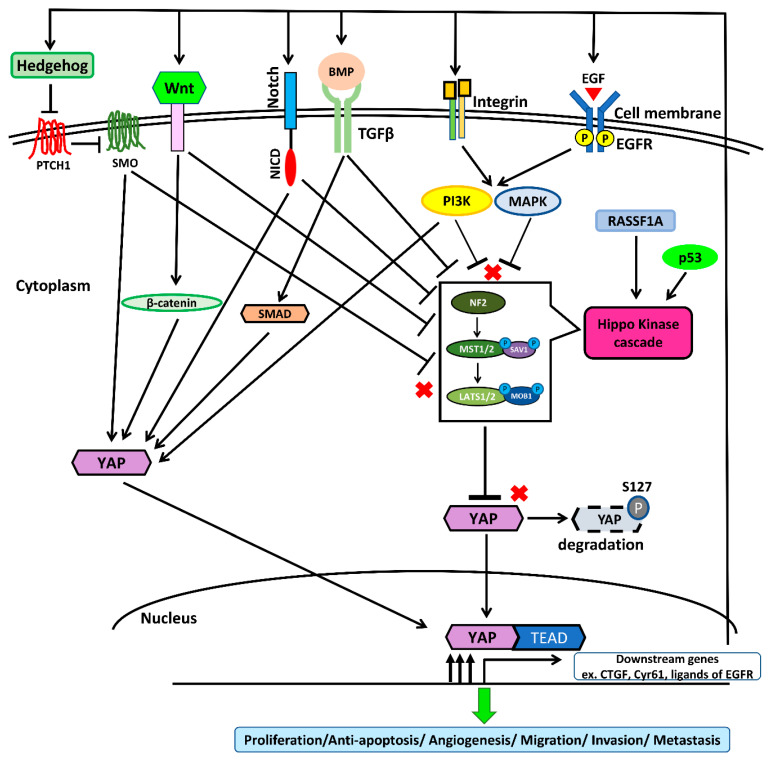Figure 3.
The regulation of the Hippo/YAP signaling pathway in non-small-cell lung cancer (NSCLC). The Hippo kinase cascade consists of neurofibromatosis 2 (NF2), mammalian sterile 20-like kinase 1/2 (MST 1/2), and large tumor suppressor homolog 1/2 (LATS1/2). In the cytoplasm, Hippo kinases phosphorylate the Yes-associated protein (YAP) at serine 127, leading to the sequestration and degradation of YAP. Tumor suppressors, including RASSF1A and p53, activate the function of Hippo kinases. Signaling pathways, including MAPK, PI3K, Wnt, TGFβ, Notch, and Hh, directly activate YAP to form a positive loop, in part, and partly activate YAP by repressing Hippo kinases. The activation of transcriptional downstream genes, including CTGF, CYR61, and other ligands of the epidermal growth factor receptor (EGFR), leads to the formation of positive autocrine loops that activate oncogenic pathways. The formation of these autocrine loops enhances YAP signaling, which promotes tumor cell proliferation, anti-apoptosis, angiogenesis, migration, invasion, and metastasis in NSCLC.

